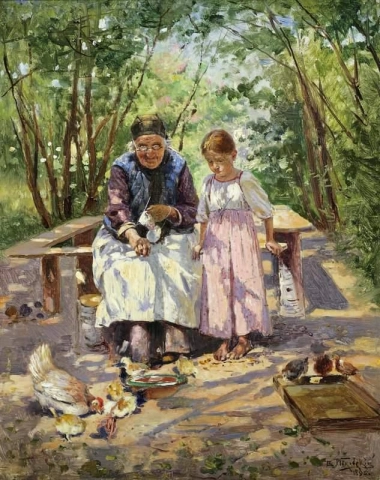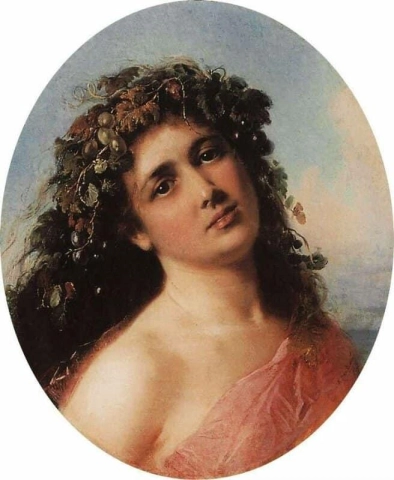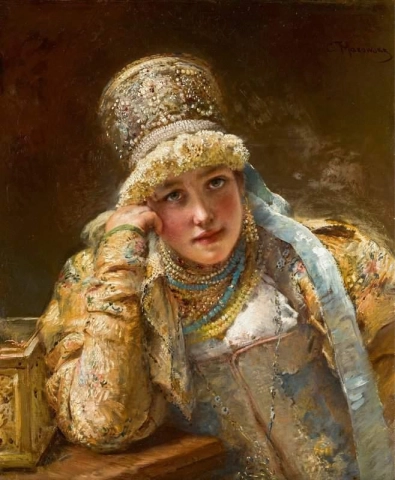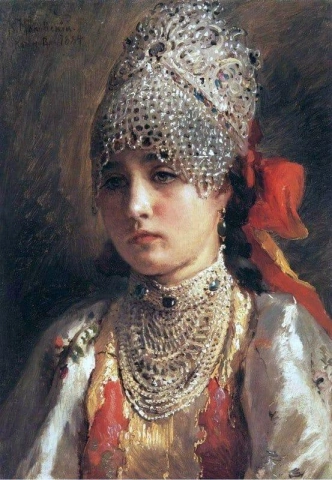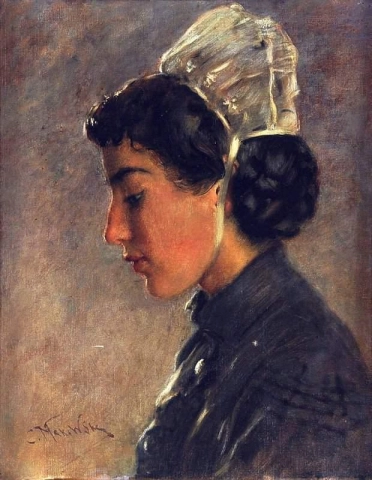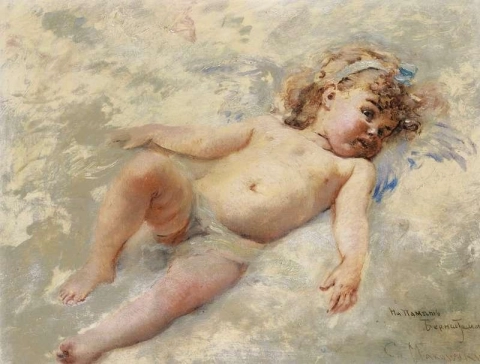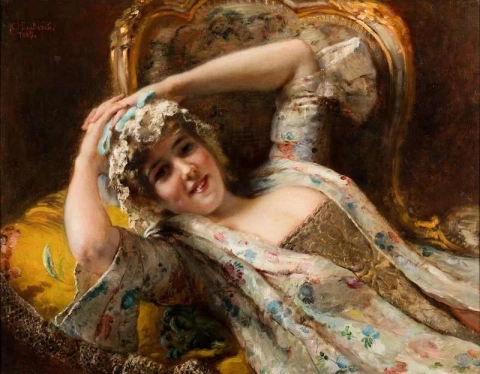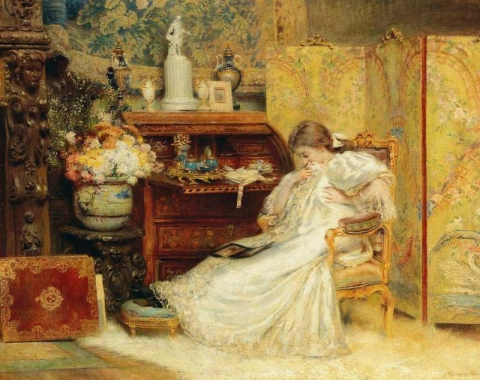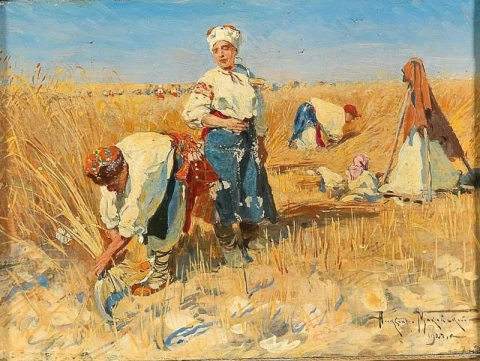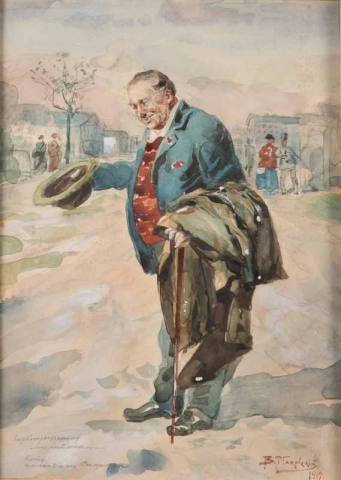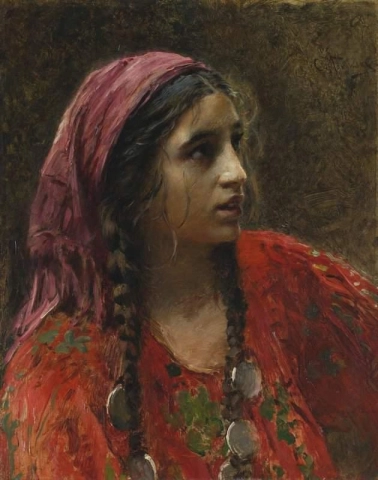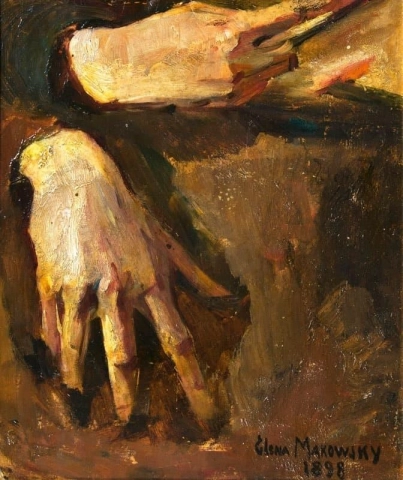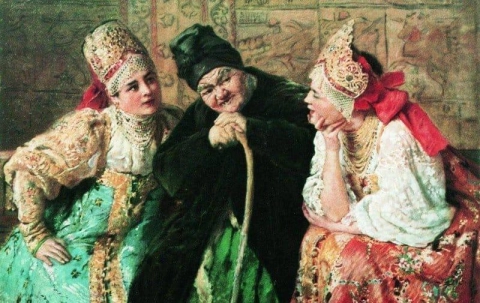

Hand painted reproductions of Elena Konstantinovna Luksh-Makovskaya
Elena Konstantinovna Luksh-Makovskaya: A Trailblazer of Symbolism and Art Nouveau
Elena Konstantinovna Luksh-Makovskaya (1878–1967) was a Russian-Austrian painter and sculptor whose work bridged the realms of Symbolism and Art Nouveau. Known for her delicate yet evocative compositions, she became one of the few prominent female artists to gain recognition in the male-dominated art world of the early 20th century. Her artistic vision was deeply influenced by her Russian heritage and the flourishing Secessionist movement in Vienna, where she spent much of her career.
Early Life and Education
Elena was born on November 15, 1878, in Saint Petersburg, Russia, into a family steeped in art. Her father, Konstantin Makovsky, was a celebrated Russian artist associated with the Peredvizhniki movement, and her upbringing was filled with exposure to art and creativity.
Encouraged by her family, Elena began her artistic studies at the Imperial Academy of Arts in Saint Petersburg, where she trained in both painting and sculpture. Seeking to expand her horizons, she moved to Munich in 1896 and later to Vienna, where she enrolled in the Kunstgewerbeschule (School of Applied Arts). Under the tutelage of artists like Koloman Moser, she honed her skills and absorbed the aesthetics of the Vienna Secession.
Artistic Style and Development
Elena Luksh-Makovskaya’s art is characterized by its lyrical quality, blending Symbolist themes with the decorative elegance of Art Nouveau. Her work often featured ethereal female figures, mother-and-child motifs, and allegorical themes, rendered with a soft, dreamlike palette.
In Vienna, Elena became closely associated with the Wiener Werkstätte, an influential design collective that emphasized the unity of art and craft. Her participation in exhibitions organized by the Vienna Secession brought her recognition as a painter and sculptor of remarkable talent.
Elena’s style evolved to reflect the influences of Gustav Klimt and the Symbolist movement, but she retained a unique voice that set her apart. Her works exuded an emotional depth and an intimate connection to her subjects, often exploring themes of femininity, motherhood, and nature.
Major Works and Themes
One of Elena’s most celebrated works is her painting Mother and Child (1901), which was featured in the 14th Vienna Secession exhibition and earned critical acclaim. The piece exemplifies her ability to convey tenderness and spirituality through composition and color.
Elena also excelled in sculpture, creating delicate portraits and figurative works that captured the essence of her subjects. Her sculptural works reflected her interest in the human form and her mastery of detail, blending realism with Symbolist ideals.
Throughout her career, Elena explored themes of family, love, and introspection. Her works often featured women in contemplative poses, surrounded by natural elements that symbolized harmony and renewal. This thematic focus mirrored her own experiences as a woman and mother, as well as her deep appreciation for the interconnectedness of life and art.
Significance and Achievements
Elena Konstantinovna Luksh-Makovskaya was one of the first female artists to gain prominence in the Vienna Secession, a movement that championed innovation and artistic freedom. Her participation in major exhibitions and her collaborations with the Wiener Werkstätte established her as a leading figure in the Art Nouveau movement.
Despite the challenges faced by women in the art world, Elena carved out a successful career and gained recognition for her contributions to painting and sculpture. Her work not only reflected the artistic trends of her time but also offered a deeply personal perspective, rooted in her Russian heritage and her experiences as a woman.
Elena’s ability to balance aesthetic beauty with emotional resonance made her a distinctive voice in early 20th-century art. Her contributions to the Vienna Secession and her exploration of Symbolist and Art Nouveau themes have earned her a lasting place in art history.
Later Life and Legacy
In the later years of her career, Elena faced the upheavals of World War I and World War II, which disrupted her life and work. Despite these challenges, she continued to create art, leaving behind a legacy of paintings and sculptures that reflect her resilience and artistic vision.
Elena passed away in 1967 in Feldafing, Germany, leaving a body of work that continues to inspire admiration for its beauty and emotional depth. Her art is preserved in collections across Europe, including the Belvedere Museum in Vienna, where her contributions to the Vienna Secession are celebrated.
Where to Find Reproductions of Elena Luksh-Makovskaya’s Art
For those captivated by Elena’s elegant and evocative works, reproductions of her paintings are available from select art retailers. These pieces bring the timeless beauty of her Symbolist and Art Nouveau masterpieces into contemporary spaces, allowing viewers to appreciate her unique artistic vision.
Imagine owning an original work of art by Elena Konstantinovna Luksh-Makovskaya, one of the greatest artists in history. At POD we offer you the opportunity to make this dream come true. We reproduce Elena Konstantinovna Luksh-Makovskaya's works down to the smallest detail, so you can enjoy them in your own home.
Our reproductions are made by experienced artists who use the best materials and techniques. We are dedicated to providing you with the highest quality works of art, which will bring joy and inspiration to your family for generations.







